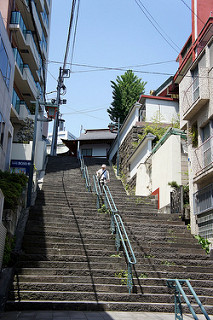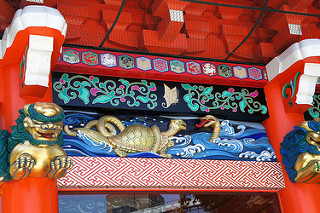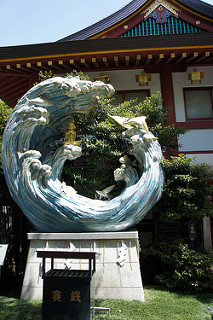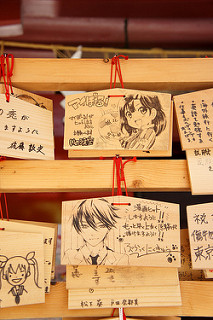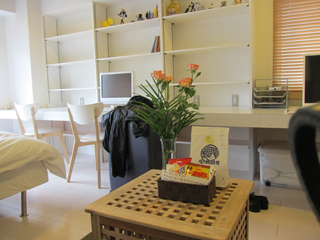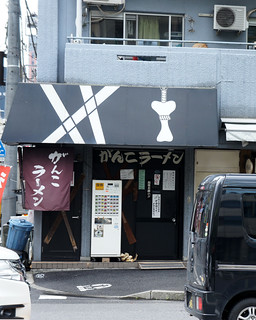Friends of ours are going to Japan for Christmas. I’m not jealous. No.
They asked if I would give them some hints and tips. They’re going to Tokyo, Kyoto, Osaka and Hiroshima – fortunately all places I’ve been to! When I sent my list of hints and tips, it was suggested that I publish it, so here it is. It’s not comprehensive, and it is highly subjective, but maybe if someone else is planning a trip and needs a bit of guidance, it will help.
General
Prepare yourself for jetlag unlike anything you have ever experienced. The first time my husband and I went to Japan, we couldn’t sleep on the flight and ended up being awake for 36 hours. This made arriving in a country like Japan, that is so different to the UK and has a totally different way of writing its language, utterly discombobulating. It took us a day and a half to recover. The same thing happened on our second trip. On our third trip, we had wised up and bought ear plugs and eye masks, so that we could shut out the aircraft surroundings and get a little sleep on our way from the UK to Narita. It helped. We didn’t feel nearly as spaced out when we arrived as we had on previous trips. It is worth building in a day at the start of your trip, too, that doesn’t involve doing much of anything at all. I know, you’ll have travelled a long way and you don’t want to miss a moment of this fantastic country, but be kind to yourself. Let your body recover. If you can’t bear to sleep off the lag, then find a park to sit in, buy some food, and chill while you take in the view.
In terms of travelling once you’re there, the Japanese train system is worthy of the word awesome. I stand completely in awe of it. I have a friend who says that we shouldn’t be in awe, that this is how a train system should work, and we should demand the same standard in the UK. Well, yes, but…

The Hyperdia online train timetables are really useful when planning day trips or working out how long it will take you to get from one major city to another. You can narrow down the train companies, if you’re travelling on a JR Pass, so that only the Japan Rail routes are shown, and you can instruct it to take you via other places you want to visit en route. You can pick up paper copies of the train timetables at major stations in Japan, but if you have a device with you that connects to the internet, why bother?
If you’re going for at least a week and planning to travel around a fair amount, then it’s worth investing in a JR Pass before you go. The passes are only available to visitors to Japan, who have a sight-seeing visa in their passport. When buying the pass, you are sent an Exchange Order which must be validated and exchanged for the pass when you arrive in Japan. You have three months in which to validate the pass, so don’t buy it too far in advance! The UK based Japan Travel Centre has useful FAQ about the pass, and is the cheapest for buying the pass at time of posting. In the UK, you can also buy the pass from My Bus. We’ve used both companies and never had any problems. It’s up to you whether you go for an Ordinary or a Green Car pass. We’ve always used Ordinary passes – there doesn’t seem to be any particular advantage to a UK resident in travelling first class in Japan, as ordinary class is better than first class in the UK!
I recommend the Lonely Planet Japanese Phrasebook. I’ve already included this book in my post about guidebooks. I got it as a honeymoon present, it has a food index to help you decipher menus and food in shops and loads of handy phrases that you can either try to say or point at for the Japanese person to read. It gave me my first triumph at speaking Japanese and being understood (asking to send a postcard to the UK).
Money. Take some yen to cover your first couple of days. We budget at 10,000JPY per day and often have money left at the end of the trip. We take travellers cheques in yen and cash them as and when. Banks (and their ATMs) close at 6 p.m. and it’s hard to find an open one at the weekend. There are ATMs in 7eleven convenience stores that take UK debit cards. I found that buying yen before I went and using my card to draw yen out while I was there was pretty similar in terms of exchange rates and commission. Cash is still the easiest option, more places take card payments now, but it’s still quite rare.
Onigiri: the best convenience food in the world! Rice balls with various fillings, usually wrapped in nori seaweed. This is a guide to deciphering the labels, but if you’re an omnivore, just take pot luck. They are amazing! I have accidentally eaten fish ones and they were delicious…

Let’s talk about the weather. We have been to Japan in March, May and October. March was surprisingly cold. May was warm, building up to hot. October was warm but damp. In both March and October, we have experienced typhoons, so a sturdy umbrella and lightweight rain gear are both worth packing. If you’re going around Christmas, like our friends, it will be cold while you’re there. I have a friend who is out there teaching, and he dresses like a Michelin man during winter. If you’re visiting in winter, take lots of layers. Should you be unlucky enough to get ill, here’s my account of trying to find cold remedies that work (there are none) in Japan. If you’re going in summer, prepare for hot, humid and potentially stormy weather.
Department stores: Tokyu Hands in Tokyo for all sorts of stuff (it’s part hardware store, part IKEA, part Woolworths), Yodobashi Camera everywhere for electronics, Loft for house-type stuff, Daimaru in Kyoto for the food hall, Isetan at Kyoto Station. We’ve been to an Isetan in Ginza, expecting it to be as lovely as the Kyoto one, but it was geared very much to the shopping clientele of Tokyo’s answer to Bond Street, and not to the likes of us! This blogger has written a guide to the best デーパート in Kyoto, including how to get a tax refund if you’re buying something over 10,001JPY in price.
Tokyo
Get hold of a copy of the Tokyo Lonely Planet Encounter Guide. Again, I’ve already blogged about this little gem. It has a good map of the main tourist areas in Tokyo and useful info on places to eat and drink.
It’s worth downloading a Tokyo Metro Subway map, but you can also pick them up at any of the stations. As with having a London Underground map, it’s useful to have something to hand while you’re travelling around so that you know where you need to change lines when crossing the city. There is an overground loop line, called the Yamanote Line, which you can use your JR Pass on, but sometimes the subway is more convenient. If you don’t have a JR Pass, or you prefer the convenience of the subway, we were advised once to buy a Tokyo Metro One Day Open Ticket on days when we would be doing a lot of hopping around. Priced at 710JPY, it gives you unlimited travel on the Metro subway lines. If you know you’re also going to be using the Toei Subway Line, get a combined One Day ticket for 1,000JPY. As well as saving you a little bit on individual journeys it means you don’t have to queue to buy a ticket for each journey you make. There’s also the PASMO card, which is similar to the Oyster card in London, and enables you to use Tokyo Metro Subway trains, JR trains and buses, as well as pay for goods in some stores. It doesn’t save you any money, but it does mean you really don’t have to think about what sort of ticket you need to buy to travel.
In the past when visiting Tokyo, we’ve always stayed in Asakusa, which is in the old Edo part of town. Even if you don’t stay there (and there are reasons for and against doing so), it’s worth a visit. The Sky Tree is there, and the area has a whole lot of history.

Ueno isn’t far from Asakusa and has a huge park, loads of museums, and an old street market near the train station.
Ochanomizu/Kanda/Jimbocho are fun for a half day’s wander around the guitar shops and book shops. It’s a boho kind of area, with a university town feel to it.

We made our first trip to Odaiba in March 2012 and loved it. We wished we’d given ourselves more time to explore, as there is lots to see and do. We made a return visit when we stayed in Akihabara in 2014, visiting Miraikan and seeing Gundam again. It can get a bit cold and windy, as it’s a man-made island in Tokyo Bay, so take a coat! We took the JR Yamanote line to Shimbashi station, then rode the automated Yurikamome elevated train over the Rainbow Bridge. We chose to buy the one day open ticket for 800JPY, so that we could hop on and off the train when visiting different areas. When we arrived at the ticket machines, we had a struggle to work out how to buy the ticket – there were lots of different coloured machines for different types of ticket. Eventually, we worked the colour coding out, mainly by following instructions that said 800円 on them!
We love Kabukicho and Shinjuku. Kabukicho because it’s so garish and there are Taito Stations to while away the hours and the Yen on arcade games, Shinjuku for the skyscrapers and the photography opportunities late at night. Plus it’s where the taxi scene that opens Lost In Translation was filmed – Bill Murray’s face is a perfect depiction of the effects of jet lag.

Shibuya has an iconic pedestrian crossing and the Hachiko statue. It also has the Starbucks where a scene in Lost In Translation was filmed.
Harajuku and Yoyogi Park/Jingu bridge are no longer the Cos Play magnet of old – partly because of the number of tourists turning up to photograph the teens in their finery. It is still a great place to shop, and experience the cutting edge of Japanese fashion, along with Omotesando and Aoyama.

Atmos vs Hello Kitty Reebok trainers in La Foret, Harajuku
Crayon House (delicious food and delicious Yebisu beer, with a bookshop on the ground floor level) is also in the Omotesando part of town. The first time we went, it was exclusively vegetarian, but more recently has changed to vegetarian friendly, with more meat and fish dishes on the menu. They do still have a monthly Vegetarian Buffet night, though.

Bon serves traditional Buddhist food. It’s quite expensive, but well worth it – this is my blog post about it.
On our 2014 trip, we discovered two more good places to eat when you’re veggie/vegan – Brown Rice Cafe, near to Crayon House, and Pure Cafe in the Aveda building behind Omotesando.
Kyoto
Kyoto’s subway consists of two lines – the Karasuma line and the Tozei line. The Karasuma line runs north-south, and the Tozei line runs east-west. Kyoto is a walkable city, but sometimes you’ve had enough walking and need to use the subway! There are also City Buses that you can ride on a loop around the city for a flat fare of 220JPY – just remember to pay as you exit the bus, try to have the right change before you get on or use the change machine in plenty of time before you’re due to exit the bus. Buses can get crowded, and not being prepared to pay as you leave can cause irritation! There’s a brief guide to how to use Japanese buses on Japan-Guide.com. There are a few overground railway lines as well, that will take you to places of interest just outside Kyoto, including Arashiyama, Nara and Fushimi Inari.
Exploring Kyoto on Foot is a good guide book, even if you don’t follow the trails.
Nishiki Market and Teramachi Dori are must-see places in Kyoto. Nishiki Market is a covered market with food stalls, craft shops, clothes shops and 100 Yen shops all mixed in together. You can try some of the food on offer, or buy a snack to eat as you browse, as well as gasp at the exorbitant prices in some of the high end greengrocers. We once saw a basket of mushrooms at 98,000JPY. That’s about £700/$1100. Teramachi Dori is a very long street stretching north to south. A mid section of it is a covered shopping arcade. It gets its name from the temples relocated to this part of Kyoto in the 16th century by Toyotomi Hideyoshi. Shin Kyogoku is another covered arcade that runs parallel to Teramachi Dori.
As recently revealed, Nijo Castle is my favourite Japanese castle. You don’t need to see another one when you’ve seen this one, in my opinion.
A trip to Kyoto wouldn’t be complete without a look around Gion and Maruyama Park. You’re more likely to see a Maiko Henshin than a genuine Maiko or Geiko, but if you time it right, you might see some on their way to work, or you could go to Gion Corner or time your visit to coincide with the Kitano Odori in spring.

Kiyomizudera is also a must-see, particularly if you are in Kyoto during the cherry blossom season or the autumn leaves season. The temple is iconic, built into the mountainside and protruding over a deep valley on stilts.
Gion and Kiyomizudera are part of Higashiyama district, which has lots to see and do if you have plenty of time in Kyoto. We have been three times now, and still haven’t exhausted its delights!
To the north west of the city centre are two of my favourite places, Kinkakuji and Ryoanji. We got there by bus as it was easier than taking the subway and then having to walk. Some people arrive and leave in a taxi, though!


For cheap views across Kyoto, head to the top of Kyoto station. The station is full of shopping opportunities, and the area around the station has some temples worth visiting, including Higashihonganji.
For traditional homemade Buddhist food, that is amazingly good value and extremely tasty, try Mikoan. Mikoan has now sadly closed following a fire. Other vegan/veggie places to eat are Hale in Nishiki Market and Matsuontoko Obanzai (Obanzai is now also closed). In 2015, we discovered Mamezen in the Shimogamo area north of Kyoto. Mamezen specialises in soy ramen – the broth is made with soy milk instead of dashi and the lunch sets we had featured yuba and tofu. It’s a little hard to find but is on Google maps, so not impossible. The staff were really helpful and made sure that I was safe from harm with my mushroom allergy! For the omnivores reading this, here’s someone else’s guide to places to eat in Kyoto!
Hiroshima
We’ve only done a day trip to Hiroshima so far. We’ve now stayed in Hiroshima for a few days and seen more of the sites, including Miyajima and the Peace Memorial Museum. I love Hiroshima, because it feels really chilled out.
If you’re doing a day trip, choose to either do the A-Bomb dome and Peace Memorial Park or the boat trip (covered by the JR Pass) to Miyajima. In my opinion, you can’t do both in a day and do them justice. We chose to focus on the Peace Memorial Park on our day trip in 2009. The castle is also worth a stroll around, and is doable with the Peace Memorial Park.

Hiroshima tourist guide.
The first time we visited the city, we ate at the fabulous Otis! tex-mex food and music bar, so good that I could have moved in! We’ve tried a couple of other places since then, including places we found through Happy Cow. Our favourite place was Shanti, which unfortunately closed in April 2014, but Namaste at the train station was also good, and Otis! continues to serve good food, of course.
Osaka
Osaka Castle is my husband’s favourite Japanese castle, and for me is the best thing about Osaka! Definitely worth it for walking around the grounds and the views from the top.
If it’s views that you are after, then the Umeda Sky Building is also worth the short stroll from Shin Osaka station.
We’ve also ventured into the Nipponbashi, Dotonbori and Den Den Town areas of Osaka. I liked Den Den Town, but found Nipponbashi a bit too crowded.


To be honest, I’ve not had brilliant experiences in Osaka so far – the castle was nice, but trying to navigate the shopping areas and trying to make myself understood was a bit stressful for me. It seems a bit brash, as cities go. Other people I know love it, though.
So, that’s my basic guide, covering the things I think are important, and the places our friends will be visiting. There’s loads of information out there to help you prepare for your own trip, so happy searching!

